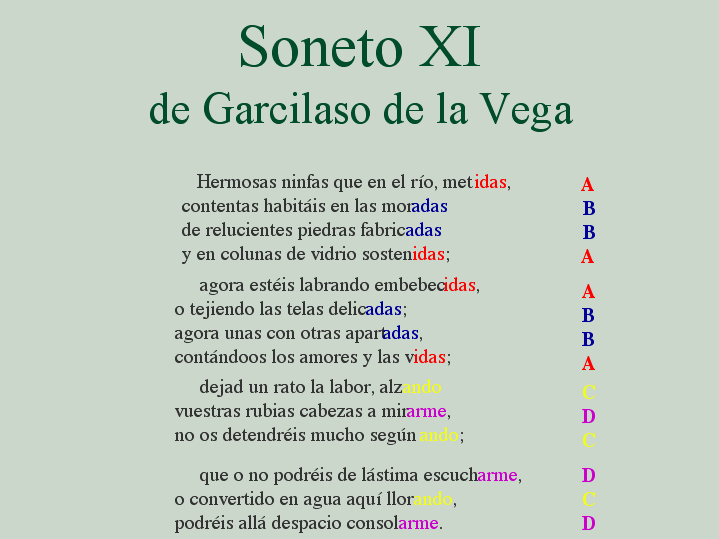
Teaching Spanish Grammar and Literature
with PowerPoint
Dennis D. Pollard, Ph.D.
Intermediate Spanish Course Coordinator
Department of Romance Languages and Literatures



This page describes three applications which use PowerPoint to teach
problemtic aspects of Spanish grammar and literature.
The image below shows how the rhyme scheme is demonstrated. You can click
on the image to launch the PowerPoint presentation.

2. The second application, called Ser y Estar: Definición vs. Percepción, presents the two Spanish verbs "ser" and "estar." These verbs are problematic for students because they occur in the same sentence structures and they both translate into English as "to be." Their meanings are quite different, however. This application combines text, static images and video to demonstrate required uses of the verbs as well as how they are used with adjectives to identify and describe people, places and things. The images and videos help students remember specific circumstances in which one or the other of these verbs is used.
I developed this presentation for use in Spanish 275, Intermediate Grammar and Composition, and I have used it several times in my sections of this course. I have also been asked to give this presentation in elementary level Spanish classes, where it has also proved effective.
The image below shows a screen shot from a video of a window being broken. The verb "estar" is used to describe how the window has changed (perception) while remaining the same window (identity). You can launch this PowerPoint presentation by clicking on the image.
3. The third application presents the linguistic concept of aspect and how it applies to two past-tense Spanish verb forms, the preterite and the imperfect. This application combines text, static images and video to show students how a speaker can view past actions as having been completed (preterite) or as ongoing (imperfect), helping them understand the choice between these verb forms. I also developed this presentation for inclass use in Spanish 275. The image below shows an action (saltar) being interrupted. If a speaker were to contemplate an action in this manner, as incomplete, the imperfect would be used (saltaba).